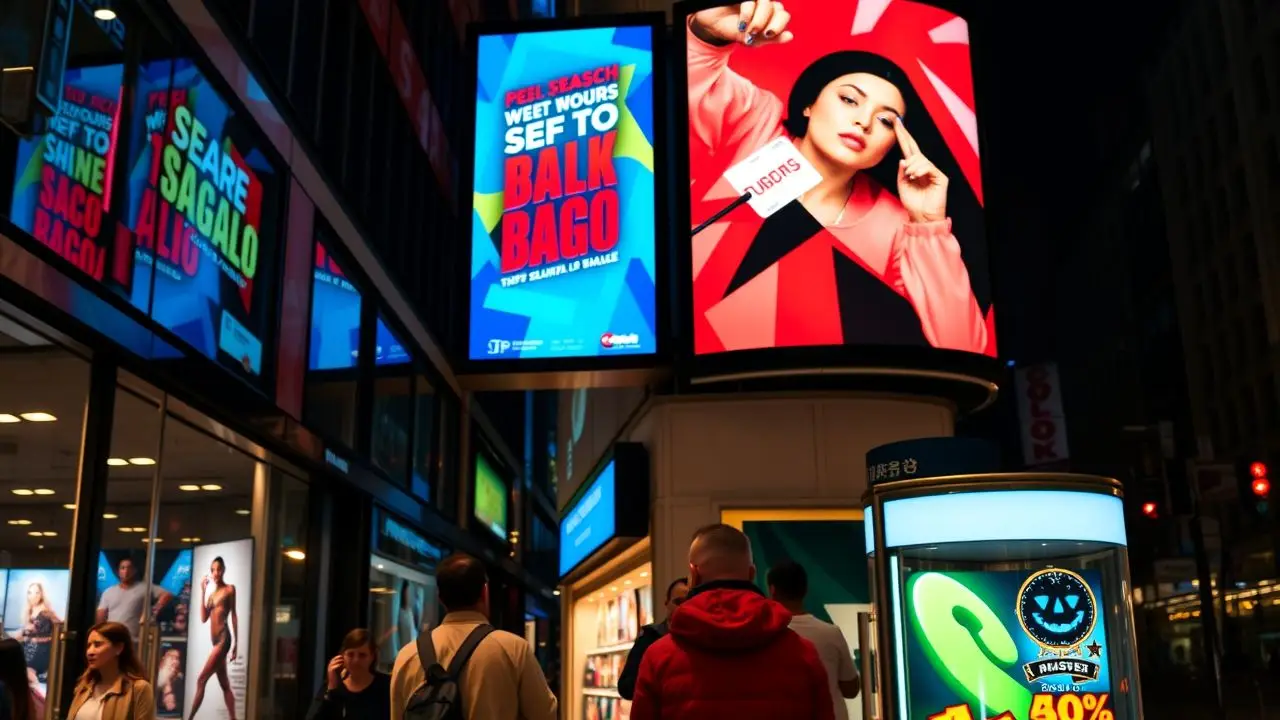Many stores want to sell more products. Digital displays can help with this goal. This blog will show you how using digital signage can boost retail sales and engage customers. Keep reading to find out more!
Key Takeaways
- Digital displays in stores grab attention with bright images and videos. This makes shopping fun and increases sales.
- Stores use different types of digital signs like LED screens, touchscreens, and video walls to catch the eye of customers.
- Using digital signage can boost customer engagement. For example, some retailers saw a 30% rise in interest from shoppers after using visual ads.
- Measuring how well digital displays work is important. Stores look at sales before and after installing signs to see their impact.
- Creative uses of digital signage, like AR experiences or upselling at checkout, can make shopping more exciting and increase sales.
Understanding Digital Signage in Retail

Digital signage is key in retail. It uses screens to show messages and images that attract customers.
Definition

Digital signage is a way to show information using screens in stores. These displays can show images, videos, and text. Retail businesses use them to grab attention and engage customers.
There are many types of retail digital signage displays. Some examples include point-of-sale displays and interactive technology like touch screens. These eye-catching digital advertising tools help boost sales promotion efforts and improve customer engagement, making shopping more exciting for everyone.
Types of Retail Digital Signage Displays
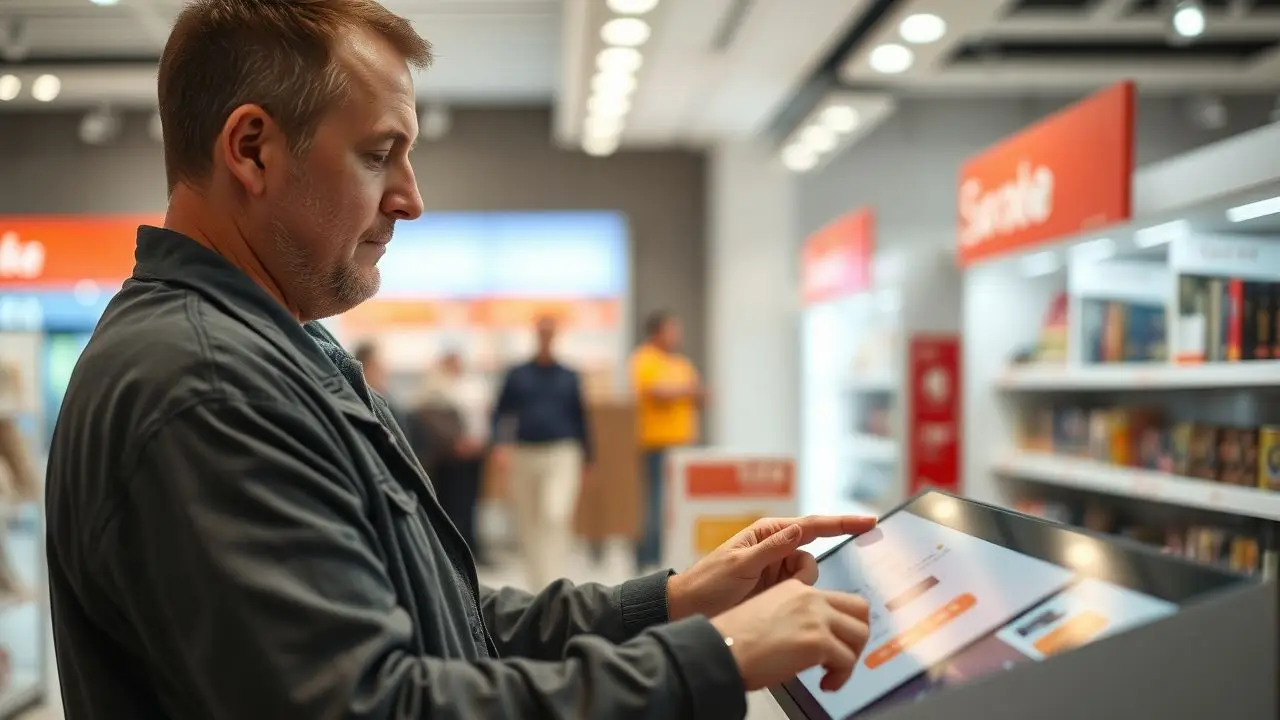
Digital signage comes in many forms. Retailers can choose displays that fit their needs.
- LED Displays: These bright screens grab attention easily. They show vibrant colors and can run videos or images. Retail stores use them for promotions and sales.
- LCD Screens: These flat screens are popular in many shops. They provide clear images and are great for showing product details or advertisements. Stores often place them near the checkout area.
- Touchscreen Displays: Customers love interacting with these displays. They can browse products, check prices, or learn more about items at their own pace.
- Video Walls: Large screens made of multiple panels create stunning visuals. Retailers use video walls to showcase brands or make exciting announcements.
- Digital Posters: Simple yet effective, these displays show static images or short videos. Stores place them in windows to attract foot traffic from outside.
- Interactive Kiosks: Customers can find information quickly using these self-service stations. They help shoppers locate products and even check inventory levels in real-time.
- Projected Displays: These creative setups use projectors to display content on walls or floors. They are eye-catching and add a fun twist to retail marketing strategies.
- Mobile Digital Signage: Stores can use portable digital signs for flexibility and easy movement around the shop. They are perfect for quick promotions during busy sales events.
Using the right type of retail digital signage helps boost engagement and bring customers inside the store.
Benefits for Customer Engagement

Digital displays can grab attention quickly. They show bright images and videos that pull customers in. This makes shopping more fun and engaging. Interactive displays let shoppers touch screens for more info.
Such engagement can lead to higher sales.
In-store advertising through digital signage helps keep the focus on products. It shares important details right at the moment of decision-making, especially at point-of-sale displays.
Many stores have seen a rise in customer loyalty because of these tools. For example, retailers using visual merchandising with eye-catching graphics saw a 30% increase in interest from shoppers.
Impact of Digital Signage on Sales
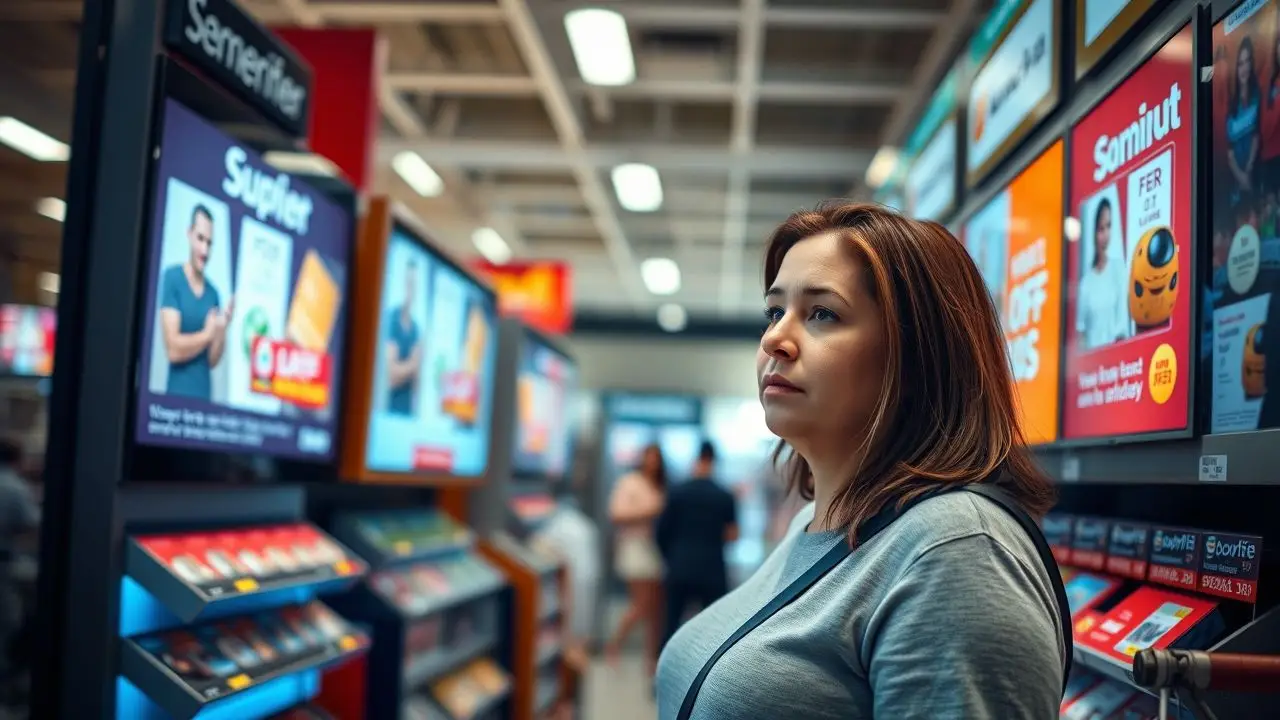
Digital signage can greatly boost sales in retail. It attracts customers and keeps them engaged with eye-catching content.
Case Studies of Successful Implementations
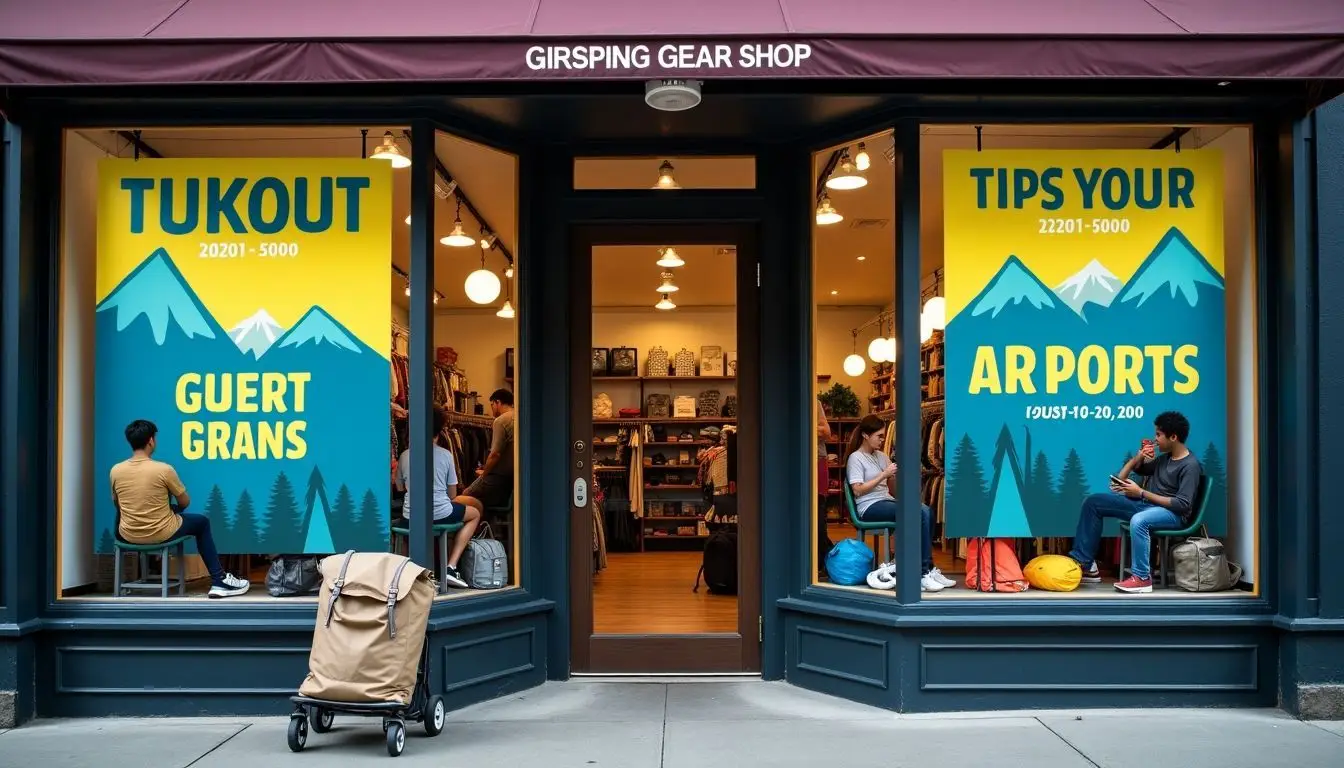
Digital signage can greatly boost retail sales. Many stores have found success using this technology.
- A major clothing retailer used bright digital displays to showcase new arrivals. Sales increased by 30% after installation. Customers engaged more with the products. The store saw a rise in foot traffic and interest.
- A well-known electronics store added interactive screens near popular items. Shoppers could explore product features through touch screens. This led to a 25% jump in sales from those products.
- A grocery chain placed digital ads at checkout areas. These point of sale displays highlighted discounts and recipes. Sales of featured items rose by 40%. Customers responded well to the eye-catching promotions.
- An outdoor gear shop used vibrant window displays with changing promotions throughout the week. Passersby were drawn in by the movement and colors. Store visits increased by 50%, leading to higher sales figures.
- A cosmetics brand launched AR experiences in their stores, allowing customers to try on products virtually. The fun interaction spiked product purchases by over 60%. Shoppers enjoyed the unique experience, making them more likely to buy.
- A toy store created themed seasonal displays using digital signage for holidays and events. The exciting designs attracted families and boosted sales during peak times by 35%. Parents were compelled to visit for holiday shopping.
- A fitness equipment brand ran targeted ads showing workout tips on their displays in gyms and sporting goods stores. This strategy helped increase awareness and drove a 20% rise in interest for specific products.
Each case shows how creative use of display advertising can enhance customer behavior and drive sales effectively in retail settings.
Measuring ROI
Measuring the return on investment (ROI) for digital signage in retail is crucial. Retailers need to know how their digital displays impact sales and customer engagement.
| Steps to Measure ROI | Details |
|---|---|
| Track Sales Data | Compare sales before and after installing digital signage. |
| Analyze Customer Engagement | Use sensors or analytics to measure time spent near displays. |
| Survey Customers | Ask customers about their experience with the digital displays. |
| Calculate Cost vs. Revenue Increase | Deduct the cost of digital signage from the increase in sales. |
| Assess Digital Content Performance | Evaluate which content generates more engagement and sales. |
These steps help stores see the value of digital signage. They can check if sales go up and if customers like the displays. This info helps stores improve their digital signage for better sales and happier customers.
Creative Ways to Use Digital Displays for Boosting Sales

Digital displays can create exciting shopping experiences. Use them to show products in fun ways and attract more customers.
Utilizing AR for Immersive Product Experiences
AR lets customers see how products look in real life. This technology brings items to life in a fun way. Shoppers can point their phones at a screen and see 3D images of products. They can try on clothes or place furniture in their homes right from the store.
Stores using AR saw an increase in sales by up to 30%. Customers enjoy interactive experiences that make shopping easier. Engaging digital displays attract more foot traffic, driving retail sales higher.
Retailers should use AR as part of their advertising displays and instore promotions for better results.
Upselling at Checkout
Upselling at checkout can drive retail sales. Digital displays capture attention and show products that match customer interests. For example, a display might suggest snacks to go with drinks or accessories for clothing.
This adds value to the shopping experience.
In-store advertising through digital signage makes it easy to promote these items. Customers often look at screens while waiting in line. With bright colors and clear messages, these signs boost impulse buys.
Many stores report higher sales after adding digital displays near checkout areas. Retail technology helps connect what shoppers want with what you offer.
Captivating Window Displays
Window displays grab attention. They show off products in a fun way. Bright colors and moving images attract customers. Retail stores use digital displays to make their windows stand out.
These displays can tell stories about the products. A well-made window display can increase foot traffic by 30%. Store owners often use them for seasonal sales or new arrivals. Captivating visuals create excitement and draw people inside the store.
Engaging window displays help boost retail sales and improve brand image as well.
Visual Merchandising
Visual merchandising is key for retail sales. It uses creative displays to attract and engage customers. Bright colors, clear signs, and interesting layouts draw shoppers in. Effective visual merchandising boosts consumer behavior by making products stand out.
Using digital displays enhances this process even more. They can grab attention quickly with moving images or videos. Stores that use engaging visuals see higher sales at the point-of-sale display.
For example, a well-placed screen showing product benefits can lead to better buying choices. This approach strengthens digital branding and creates memorable shopping experiences for customers.
Implementing Digital Signage in Your Retail Store
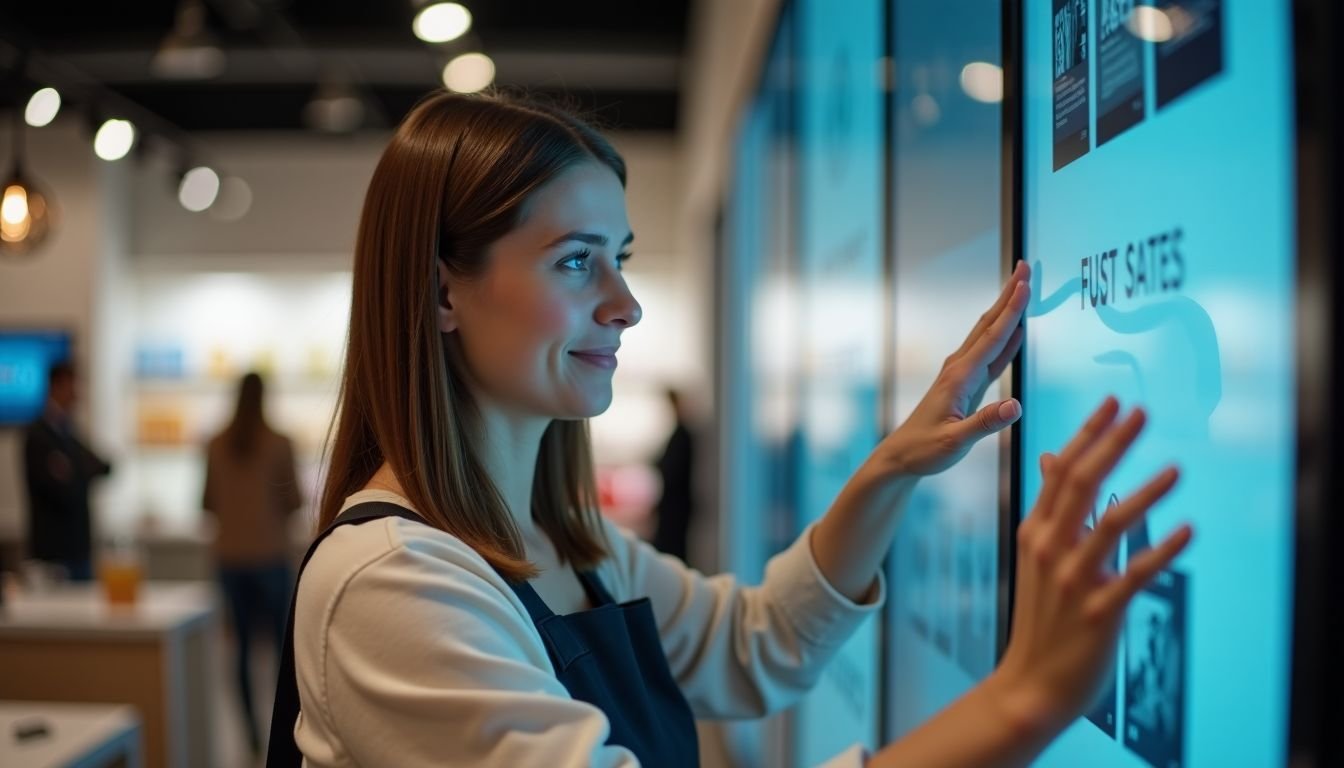
Implementing digital signage can change your store’s look. It attracts customers and keeps them engaged.
Choosing the Right Solution
Choosing the right solution for digital signage in your retail store is vital. The right choice can boost sales and improve customer engagement.
- Define your goals clearly. Know what you want to achieve with digital displays, like increasing sales or improving brand awareness.
- Assess your budget. Determine how much you can spend on digital signage solutions without hurting other areas.
- Explore display types. Choose between screens, kiosks, or tablets based on your sales strategy and store design.
- Check software compatibility. Make sure the content management system works well with the hardware you select.
- Think about content needs. Create engaging ads or promotions that resonate with your audience to enhance instore advertising.
- Consider installation requirements. Some options need a simple setup while others may require professional help.
- Look into support services offered by vendors. Reliable customer service is key if issues arise.
- Evaluate integration with other retail technology innovation tools such as POS systems or inventory software for smooth operations.
- Seek feedback from employees and customers alike to understand what works best in boosting retail sales with eye-catching digital displays.
- Plan for future upgrades or changes as tech evolves quickly in today’s market landscape.
Content Management
Content management is key for digital displays in retail. It means organizing and updating the information shown on screens. Retailers must keep content fresh and relevant. This can include promotions, events, or new products.
Using a good content management system makes it easy to change what appears on screens. Store staff can quickly update messages based on sales trends or customer feedback. Eye-catching digital displays need engaging content to attract shoppers.
The right mix of visuals and text keeps customers interested while boosting retail sales.
Integrating with Digital Transformation
Digital transformation changes how retail stores operate. It brings in new technologies to improve sales and customer experience. Eye-catching digital displays play a big part in this shift.
They attract customers and make shopping more fun.
Retail store design can benefit by using digital signage alongside other tech tools. Items can show up on screens when customers walk by, sparking their interest. This mix helps boost retail sales and keeps shoppers engaged longer.
By blending creativity with technology, stores can create exciting environments that draw people in.
Enhancing the In-Store Experience
Digital displays can make shopping more exciting. They grab attention and create a lively atmosphere in retail stores. With eye-catching visuals, shoppers feel engaged as they browse products.
Bright screens show promotions or highlight new items, which boosts interest.
Point-of-sale displays are great tools for guiding customers toward special deals. This leads to better sales and happier shoppers. A positive in-store experience keeps customers coming back for more, making digital signage a smart choice for any retail store design.
Measuring Success and Results
Tracking success is key to using digital displays in retail. Store owners can measure sales increases by looking at the numbers before and after installation. Sales data shows how effective eye-catching digital displays are at point-of-sale areas.
Customer engagement also matters. Surveys can gather feedback about what customers think of the displays. Positive responses often lead to higher sales numbers. Setting clear goals helps stores see if their digital signage boosts retail sales effectively.
FAQs
1. What does “Boosting Retail Sales with Eye-Catching Digital Displays” mean?
It means using digital displays at the point of sale to attract customers and increase retail sales.
2. How can digital displays boost retail sales?
Digital displays grab customer attention, showcase products in an appealing way, and encourage buyers to make a purchase, thus boosting retail sales.
3. Can any business use eye-catching digital displays to increase sales?
Yes, businesses across various sectors can utilize eye-catching digital point-of-sale displays to enhance their visual appeal and boost their retail sales.
4. Are there specific strategies for creating effective digital display content?
Yes! The key is understanding your audience and showcasing relevant products or offers that would entice them to make a purchase.
